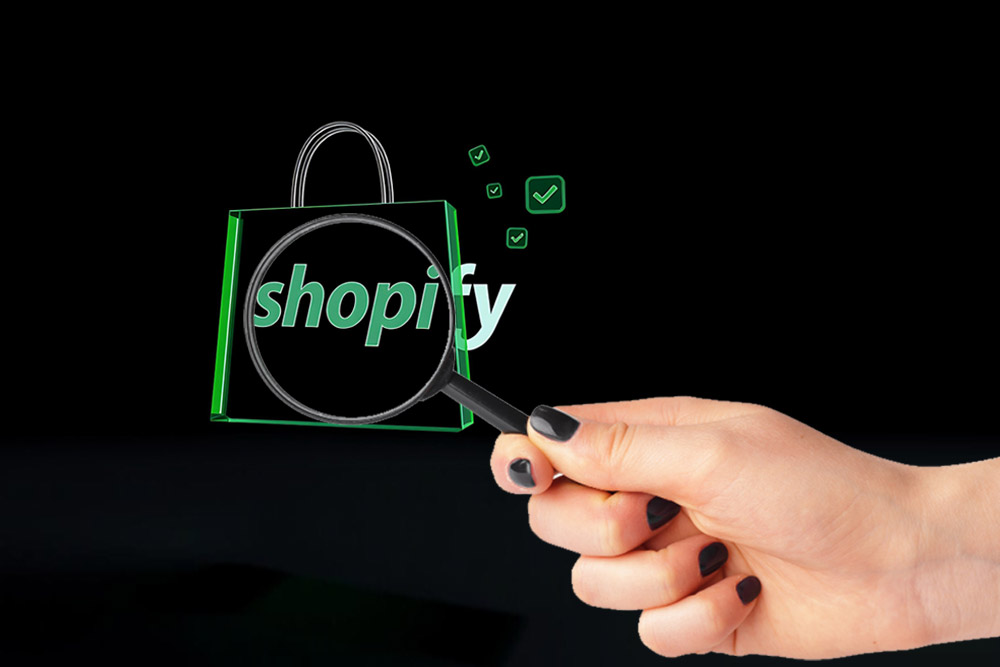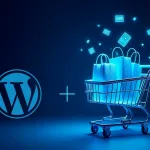To succeed online, your Shopify store needs to shine like a diamond in a sea of rocks, and that’s where SEO comes to the rescue! Optimizing your store isn’t just a nice-to-have; it’s essential for boosting discoverability, driving organic traffic, and watching those sales figures soar.
In this guide, we’ll look into actionable steps to supercharge your Shopify store’s visibility on search engines. From technical SEO magic to on-page optimization, content creation, and off-page strategies, we’ve got you covered. let’s make your online shop the true diamond!
1. Establish a Solid Foundation with Technical SEO
Technical SEO encompasses the behind-the-scenes optimizations that ensure your website is accessible, a crawlable site, and indexable by search engines. By addressing these foundational elements, you’ll create a robust platform for your on-page and off-page SEO efforts to flourish.
a. Simplify Your Site Structure
A well-organized site structure not only enhances the user experience but also facilitates SE crawling and indexing. Aim for a streamlined hierarchy that minimizes the number of clicks required for visitors to reach your products. A straightforward structure might look like this:
- Home → Category Pages → Product Pages
- Alternatively, you can incorporate subcategory pages for a more granular organization:
- Homepage → Category Pages → Subcategory Pages → Product Pages
By implementing a logical site structure, you’ll make it easier for both search engines and visitors to navigate your store efficiently.
b. Leverage a Mobile-Responsive Theme
With the increasing prevalence of mobile browsing, it’s crucial to ensure your Shopify store is optimized for mobile devices.
Shopify offers a wide range of responsive themes, both free and paid, that automatically adjust to different screen sizes and devices. Utilizing a mobile-responsive theme will not only enhance the UX but also signal to SE that your site is optimized for mobile users.
c. Optimize Images for Faster Load Times
High-quality images are essential for showcasing your products effectively, but they can also greatly impact your site’s speed of loading. Slow-loading pages → higher bounce rates → -ve affected search rankings.
To optimize your images, consider the following strategies:
- Compress image files using tools like Shopify’s built-in image resizer or third-party compression tools.
- Utilize the WebP image format, which provides superior compression while maintaining image quality.
- Include descriptive and keyword-rich alt text for all images, aiding both accessibility and SEO.
- Ensure your primary product images are included in your sitemap to facilitate indexing by search engines.
d. Streamline Page Load Times
In addition to optimizing images, there are several other techniques you can employ to improve your site’s overall loading speed:
- Minimize the use of unnecessary plugins or apps.
- Leverage browser caching
- Minify CSS and JavaScript files
- Minimize redirects, as they can introduce additional delays in loading times.
2. Optimize On-Page Elements
On-page optimization involves tailoring the content and elements on your web pages to align with SE algorithms and user intent. By implementing effective on-page SEO strategies, you’ll increase the likelihood of your pages ranking well for relevant search queries.
a. Conduct Thorough Keyword Research
By targeting the right keywords, you’ll attract more relevant traffic to your Shopify store.
To conduct keyword research, brainstorm a list of broad topics and themes related to your products or services. Then, use tools like Google Keyword Planner, SEMrush, or Ahrefs to uncover specific keywords and their search volumes.
When selecting keywords, prioritize long-tail keywords (phrases containing three or more words) as they tend to be more specific and better aligned with user intent. For example, “men’s blue running sneakers” is a more targeted keyword than “men’s sneakers.”
b. Optimize Product Pages with High-Value Keywords
With relevant keywords, it’s time to incorporate them into your product pages. Don’t do keyword stuffing.
Strategically place your target keywords in the following high-value locations:
- Page titles
- Meta descriptions
- Headings (H1, H2, H3, etc.)
- Product descriptions
- Image alt text
c. Enhance the User Experience
User experience plays a crucial role in both search engine rankings and conversion rates. By providing a seamless and engaging experience for your visitors, you’ll improve your chances of ranking higher.
Here are some strategies to enhance the user experience on your Shopify store:
- Ensure fast page load times by following the technical SEO best practices mentioned earlier.
- Implement a clean and intuitive navigation structure.
- Incorporate high-quality visuals, such as product images and videos, to showcase your offerings effectively.
- Utilize clear and compelling calls-to-action (CTAs) to guide visitors through the purchase journey.
- Regularly test and optimize key elements of your store, such as CTAs, headings, and forms, to identify and implement improvements.
3. Leverage Content Marketing
Content marketing can easily drive organic traffic to your Shopify store and establish your brand as an authority in your industry.
a. Identify Relevant Content Topics
To develop, start by identifying topics that resonate with your target audience. Consider their pain points, specific interests, and the questions they might have related to your products or services. Conduct research to uncover popular topics and trends within your industry.
b. Diversify Your Content Formats
While blog posts are a common content format, consider diversifying your approach to cater to different preferences and learning styles. Experiment with various content formats, such as:
- Informative blog posts
- Instructional videos
- Infographics
- Podcasts
- Webinars
- Ebooks or whitepapers
c. Optimize Content for Search Engines
It’s equally important to optimize that content for search engines. Follow these best practices to ensure your content is discoverable and ranks well:
- Incorporate relevant keywords throughout your content naturally and contextually.
- Optimize titles, headings, and meta descriptions with compelling and keyword-rich descriptions.
- Include internal links to other relevant pages within your store, improving navigation and distributing link equity.
- Promote your content through social media channels and other online platforms.
4. Build a Strong Off-Page SEO Strategy
Off-page SEO refers to the strategies and activities you undertake outside of your site for the betterment of improving its visibility and authority in search engine rankings.
a. Develop a Link-Building Plan
Backlinks, or links from other websites pointing to your store, are a crucial factor. They act as votes of confidence, signalling to search engines.
For a strong backlink profile, consider these strategies:
- Guest blogging: Contribute high-quality content to relevant industry blogs or publications, including a link back to your store.
- Resource link building: Create valuable resources, such as guides, tools, or infographics, and encourage other websites to link to them.
- Influencer outreach
- Broken link building
When building links, prioritize quality over quantity.
b. Foster Online Relationships and Engage with Your Community
In addition to traditional link-building tactics, fostering online relationships and engaging with your community can also contribute to your off-page SEO efforts.
Participate in appropriate online communities, forums, and groups on Social media. Share your what you know, provide valuable insights, and engage with others genuinely and authentically. This can help build brand awareness, establish your authority, and potentially lead to backlink opportunities.
Additionally, encourage user-generated content and reviews on your store. Positive reviews and customer testimonials not only enhance your credibility but also provide fresh, unique content that search engines value.
c. Monitor and Manage Your Online Reputation
Monitor your brand mentions, reviews, and social media presence to pinpoint and address any possible issues or negative sentiments.
Respond promptly and professionally to customer feedback, both positive and negative. Addressing concerns and resolving issues on time can improve your online reputation.
Continuous Optimization and Testing
Search engine algorithms and user preferences are constantly evolving, which means that your SEO efforts should be an ongoing process. Continuous optimization and testing are essential.
Regularly Audit and Update Your Content
Content is a cornerstone of any successful SEO strategy, but keep your content fresh and up-to-date.
Monitor industry trends, customer feedback, and search engine updates. Additionally, keep an eye on your analytics data to identify high-performing content and areas for optimization.
Conduct A/B Testing
A/B testing compares two versions of a website page or element to determine which one performs better. By testing different variations of your store’s elements, such as headlines, CTAs, images, or product descriptions, you can identify the most practical approach and make data-driven conclusions.
In A/B tests, it’s important to test one element at a time and ensure that you have a statistically significant sample size to draw reliable conclusions.
In conclusion, optimizing your Shopify store is like crafting the perfect recipe, it’s a blend of technical know-how, creative content, and savvy off-page strategies. By following this guide, you’ll boost your store’s visibility, attract more organic traffic, and watch those sales numbers climb!




